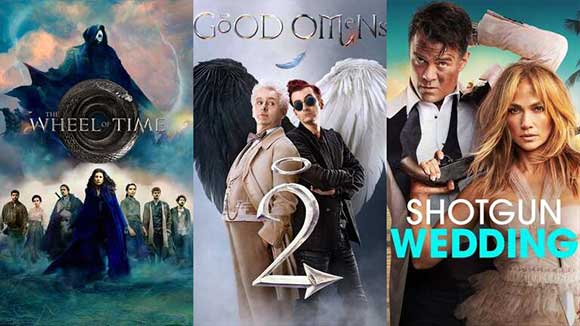Considering how the pandemic has treated how we comprehend time, I can’t fault anybody for not recalling what they did last week, last month, or the last year. Requesting that somebody recollect what occurred in James Cameron’s Symbol, which came out around quite a while back? A Considerable undertaking. Films were different in those days! The world was different in those days! What number of things does one truly recollect around 2009?
Despite the fact that Symbol is as yet the greatest film ever (netting $2.9 billion around the world), recollecting every one of the subtleties after over a decade is totally typical not.
Its continuation, Symbol: The Method of Water, comes out this week, and a portion of the film requires a fundamental working information on its ancestor — numerous characters, many subjects, and a portion of the focal clash persists into The Method of Water.
Obviously, watching the first among now and the delivery date would be the best thing to do, yet perhaps you lack the capacity to deal with the two hour and 41-minute behemoth of a film, or maybe you’re an idealist who won’t feel right watching Symbol on your non-3D television, PC, or, paradise deny, your telephone. So here’s the following best thing: a concise update on the three or so primary things you want to be familiar with Symbol for The Method of Water to check out — and the two new things that you could feel like you ought to know however that don’t really show up in the first film.
Where are we? And what are we mad about?
The main Symbol is set on Pandora, a moon where greenery are in overflow, home to the native race of creatures known as the Na’vi, enormous blue feline like humanoids. The Na’vi have their own language and profound association with Pandora. Each creature, plant, and component, the Na’vi accept, is associated with the mother goddess Eywa.
Yet, in 2154, when the film is to a great extent set, Earth is gradually becoming dreadful. In excess of 20 billion individuals live in the world, and assets are low. As Earth faces frantic times, people start marking out different spots to track down assets, and Pandora has immense stores of a characteristic mineral called unobtanium, an incredibly important asset on The planet.
The entirely restricting perspectives between the asset consuming people and the nature-cherishing Na’vi conflict when the people find a huge unobtanium store in what’s known as the “Hometree,” where the Omaticaya clan of the Na’vi live. The contention among people and the Na’vi then addresses ravenousness versus philanthropy, annihilation versus birth, endurance versus passing, and addresses subjects of dominion and expansionism.

In Symbol, Cameron didn’t be guaranteed to kick off something new. One of the normal abstains is that the Titanic chief essentially retold Pocahontas or Greenery Gorge with outsider living things and overflowing measures of CGI.
Assuming there’s an example in Symbol, it’s that the people (whom the Na’vi allude to as “Sky Individuals”) will not at any point gain from their mix-ups. They are bound to annihilate. They make want more and more. What’s more, the main thing that will prevent them from coming, it appears, is their own end.
What’s an avatar?
The primary thing remaining among mankind and its longing for interstellar asset looting is that planets and moons like Pandora are truly unfriendly to individuals — the climate is harmful to people. People need sifted breathing devices to inhale the air. Likewise, the verdure on Pandora — in Symbol: The Method of Water particularly — respond with outrageous aggression toward people.
To get around this, a human association called the Assets Improvement Organization (RDA), which handles space investigation and transportation (and is liable for said asset looting), makes what’s known as the Symbol Program. The venture permits people to control a manufactured, hereditarily designed human/Na’vi crossover animal through a connection to their cerebrum. That animal, the human’s symbol, seems to be like a Na’vi, sharing their spryness, size (Na’vi are around 9 to 10 feet tall), and capacity to inhale on Pandora.
The primary film paints symbol creation as a very tedious and costly cycle. Jake Tarnish (Sam Worthington), the human hero, is decided to be a piece of the Symbol Program since his indistinguishable twin sibling, Tom, a splendid and profoundly prepared researcher, passed on before mission time. Since Jake and Tom share a similar hereditary qualities and on the grounds that Tom was neuro-connected to his symbol, Jake — a Marine — is the RDA’s most ideal choice to rescue their venture.
People at first utilized these mixture symbols to facilitate harmony with the native Na’vi. Characters like Dr. Elegance Augustine (Sigourney Weaver) and Norm Spellman (Joel David Moore) are philanthropic researchers who concentrate on the Na’vi language, fauna, and culture through their symbol selves. Be that as it may, others inside RDA, essentially Col. Miles Quaritch (Stephen Lang), consider the Na’vi to be a necessary evil. Quaritch, who heads the security force at RDA, involves Jake as a twofold specialist to assemble key intel on the Na’vi and to inspire them to leave their unobtanium stores.

This doesn’t work out as Quaritch planned. By the end of Avatar, Sully is taken in and develops an unbreakable bond with the Omaticaya clan of Na’vi, having fallen in love with Neytiri (Zoe Saldana). He helps defend his new tribe from the human onslaught. After defeating the Sky People and sending them back, the Omaticaya attempt to perform a spiritual transfer in which Sully’s consciousness is transferred to his avatar body (thereby nullifying any need for a computerized neural link). The last moment of the film shows that it’s successful, and Sully’s new life as a full-fledged human/Na’vi hybrid is where the second movie begins.
Okay, but why do I care about Avatar?
Avatar was nominated for nine Academy Awards, including Best Picture, and won for Best Art Direction, Best Cinematography, and Best Visual Effects. That’s a great haul for an action movie! When it comes to critics’ reviews, Avatar stands at 82 percent on Rotten Tomatoes and 83 percent on Metacritic. Those are good scores! Avatar is also the biggest movie of all time, topping the chart of the biggest worldwide gross in history at $2.9 billion. That’s an enormous amount of money!
But the knock on Avatar is that, despite it being both celebrated and history-making, it’s also somehow also largely inconsequential. The common refrain is that “no one remembers” Avatar. Avatar doesn’t have the same kind of clout as a Marvel, Harry Potter, or Star Wars movie (other entries in the list of biggest movies of all time). While someone can easily name three Avengers, it’s exponentially more difficult to remember three Avatar characters’ names. And I bet that if you ask people on the street what a Jedi is versus an Omaticaya tribe member, more would be familiar with the former.
I don’t think that’s entirely Avatar and Cameron’s fault, though.

Since the film’s delivery, mainstream society utilization has moved and studios have truly put resources into effective activity driven establishments, siphoning out a large number of spin-offs. Except if you’re hiding away somewhere, in a cave perhaps, it’s unthinkable not to be know about the large, impending Wonder film existing apart from everything else, and licensed innovation is top dog. Natural characters and the fandoms that grow up around them are vital to blockbuster filmmaking in a manner that just wasn’t correct in 2009. The underlying film wasn’t worked for those assumptions (more on what it was worked for in one minute). All things considered, speculatively, assuming that Symbol had a spin-off that was delivered a few years after the main film, it could have significantly more mainstream society clout.
Another component worth considering is what Symbol has consistently gotten along admirably: look cool as damnation. Its accentuation on scene was oddly judicious.
The debate in moviegoing today is that the rise of franchises coupled with the advent of streaming has made the moviegoing audience reluctant to see non-blockbusters at the theater. People go to movie theaters primarily to see big-budget, gigantic action movies.
Avatar, with its next-level effects, lush cinematography, and masterful use of 3D, is made to be seen on the biggest screen possible. Avatar and its sequel are the quintessential “go to the theater, buy a big popcorn and soda, maybe pop an edible depending on what state you live in, and enjoy” movies. There is no movie that needs to be seen in a theater more than Avatar.




